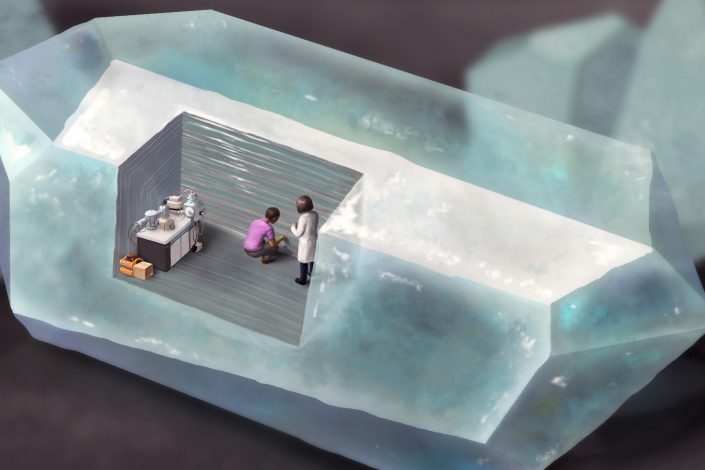Zircon dating helps researchers accurately measure geologic time

Image: Research Communications and Public Relations
If the Earth had an operating manual that was carved in stone, then the page numbers of that manual would be found in the mineral zircon. Brent Miller, a geochronologist and an associate professor in the Department of Geology and Geophysics, uses his research of zircon dating to “see those page numbers.”
Miller found interest in the nature of time as a child reading H.G. Wells novels. Zircon is one of Earth’s longest-running and most accurate minerals used for dating. Zircon incorporates uranium at the time it crystallizes, which over time decays to lead. By using a very sensitive measuring device called a thermal ionization mass spectrometer, the amounts of uranium and lead in zircon can be determined. It is then a simple calculation to determine how much time is required for the measured amount of lead to have decayed from the measured uranium.
Miller has most recently applied these methods to determining the ages of volcanic eruptive deposits in the Eagle Ford shale in west Texas. Zircon is used to very precisely determine the ages of volcanic ash beds inter-bedded with the sediments. Those ages help to constrain the timing of microfossil occurrences in the surrounding sediment ,which could otherwise not be dated directly. This information then provides a consistent timeline for testing ideas about past climate changes, sedimentary basin evolution, and correlations with other local, regional, or global sections.
The ultimate geological timekeeper, however, is to be found in the rhythms of the Earth, itself not in the laboratory. According to Miller, “We are currently limited to about 0.1 percent precision in the best of cases by dating zircon”. For Late Cretaceous ages, that means each zircon age has an uncertainty of about plus-or-minus one hundred thousand years, and extrapolating the age into the surrounding sediments only increases the uncertainty. More importantly, the zircon ages can be used to calibrate the subtle signals preserved in the sediments caused by environmental changes tied to known periodicities in Earth’s orbital parameters.
Knowing the absolute ages of a few key points in a stratigraphic section, Miller uses that information to “tune” the sediments in between the ash beds to orbital, or Milankovitch, periodicities.
Armed with this information Miller and his students and colleagues can estimate the age at any point in the section to about a five-fold higher precision.

